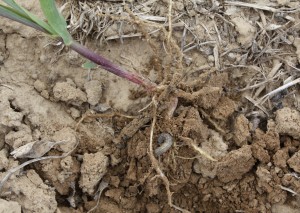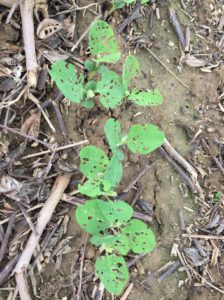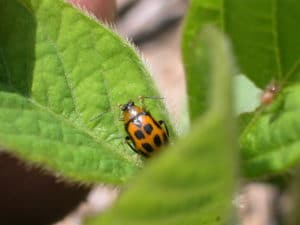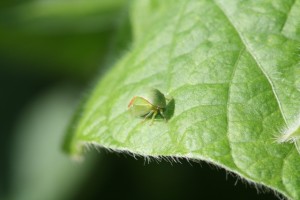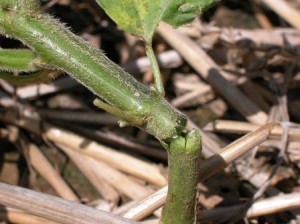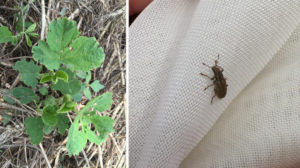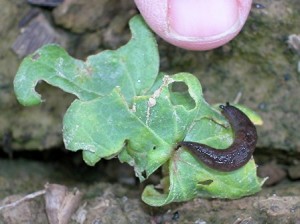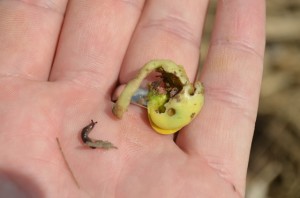With a lot of our crops now planted, I’ve provided a few reminders and pictures below about early season pest problems that are sometimes encountered.
- It’s very important to regularly scout fields during the first few weeks after emergence. Good stand establishment, or detecting a bad stand, is important. Insect wise, be alert for cutworms, particularly in cotton and corn.
- I’ve already had several calls on bean leaf beetle in soybeans that were not treated with an insecticide seed treatment. This pest rarely causes enough damage in seedling soybean to justify treatment (threshold = 35% defoliation), but the exception proves the rule. Infestations are often worse on the first planted soybeans in the area as this concentrates the beetles until other fields become available.
- With a mild winter, expect above average populations of threecornered alfalfa hopper. Their girdling of seedling plants (< 8-10 inches tall) can sometimes cause enough lodging to reduced yield. We’ve had experiences where problems with this pest are worse following legume cover crops (e.g., vetch or Austrian winter peas), at least if planted into a living cover. Insecticide seed treatments offer some but not perfect protection.
- Pea leaf beetle is another pest you might also encounter in soybean following a legume cover crop. Seed treatments normally provide adequate protection against this pest. Otherwise, this little beetle can occasionally cause substantial defoliation and stand loss in seedling soybean.
- Our scouting efforts in cotton should focus on thrips until plants have 3-4 true leaves. As you know, thiamethoxam (Cruiser) in no longer recommended as a stand-alone seed treatment because of resistance in tobacco thrips populations. With uncertain levels of resistance to imidacloprid-based seed treatments (Gaucho, Acceleron, Aeris), it is important to watch fields carefully and make treatments as needed. The additional insecticide component found in Aeris (thiodicarb) definitely improves thrips control. I’ve seen similar benefit from the avermectin component found in Avicta Elite Cotton Plus. There is also potential benefit to adding acephate (Orthene) to a base seed treatment of imidacloprid. If you only have imidacloprid on the seed, my suggestion is to plan on making an application at the 1-2 leaf stage.
- I’ve already seen or had reports of slugs in several crops. This is a no-till problem and much more likely where there is a lot of residue. For this reason, problems are often the worst in no-till fields following corn. However, several growers have reported past problems where cover crops were used. This problem cannot be cured with insecticides. Preventative management tips are to plant adequate seed into a well prepared seed bed when good emergence conditions are expected, and use row cleaners to kick residue away from emerging seedlings. Slug baits are effective but somewhat expensive. They are not readily available or easy to apply for large acreages. You have to plan ahead if you plan on using these baits. Remember, unexplained holes in the leaves are a good sign of slugs as they feed mostly at night and hide under debris during the day. The biggest problems occur when slugs cut emerging plants.
Suggested treatment thresholds and insecticide recommendation are available in the 2017 Insect Control Recommendation for Field Crops, and for cotton, also at our cotton insect “app” at http://guide.utcrops.com/cotton/cotton-insect-guide/.

